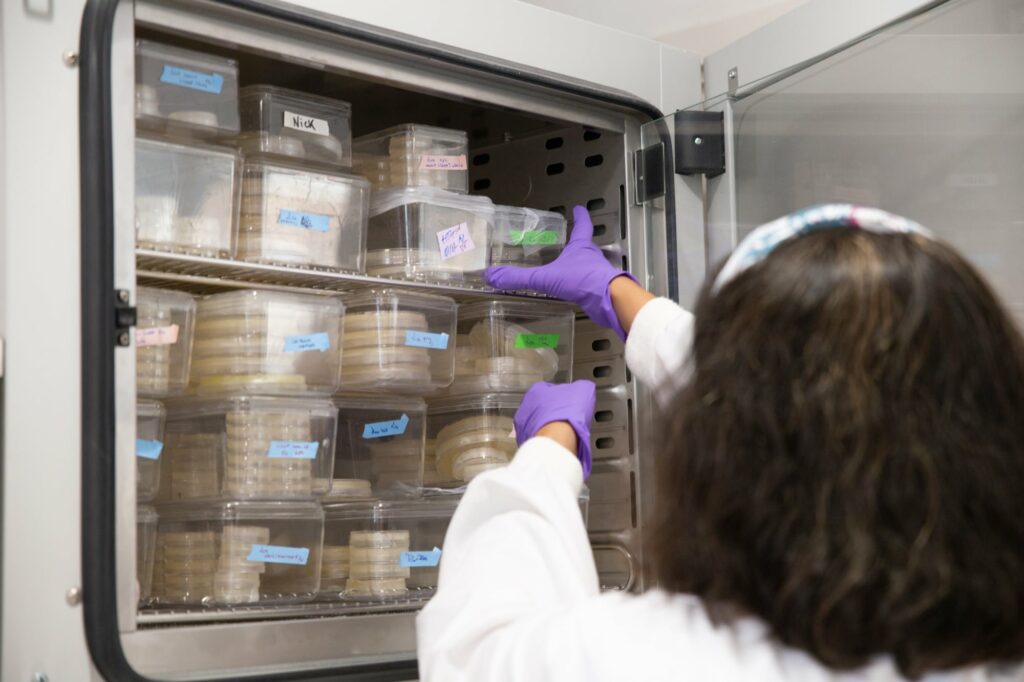Identifying SOX9 as major regulator of lung progenitor self-renewal
September 19, 2022
Read more
Alexandra Dallaire and colleagues in the Miska lab studied the changing expression of transposable elements (TEs) in Rhizophagus irregularis during spore development and whole genome epigenomic profiling of this symbiotic fungus supports a model in which TE activity shapes the genome and contributes to genome evolution.
Dallaire A et al. (2021) Transcriptional activity and epigenetic regulation of transposable elements in the symbiotic fungus Rhizophagus irregularis. Genome Research 31: 2290-2302. DOI: 10.1101/gr.275752.121.

An artistic interpretation of how epigenetic mechanisms (methylation marks and small RNAs) contribute to genome regulation in arbuscular mycorrhizal fungi; by Marzia Munafò, based on a concept by Alexandra Dallaire.
Arbuscular mycorrhizal (AM) fungi form mutualistic relationships with most land plant species. AM fungi have long been considered as ancient asexuals. Long-term clonal evolution would be remarkable for a eukaryotic lineage and suggests the importance of alternative mechanisms to promote genetic variability facilitating adaptation.
Here, we assessed the potential of transposable elements for generating such genomic diversity. The dynamic expression of TEs during Rhizophagus irregularis spore development suggests ongoing TE activity. We find Mutator-like elements located near genes belonging to highly expanded gene families. Whole-genome epigenomic profiling of R. irregularis provides direct evidence of DNA methylation and small RNA production occurring at TE loci.
Our results support a model in which TE activity shapes the genome, while DNA methylation and small RNA–mediated silencing keep their overproliferation in check. We propose that a well-controlled TE activity directly contributes to genome evolution in AM fungi.